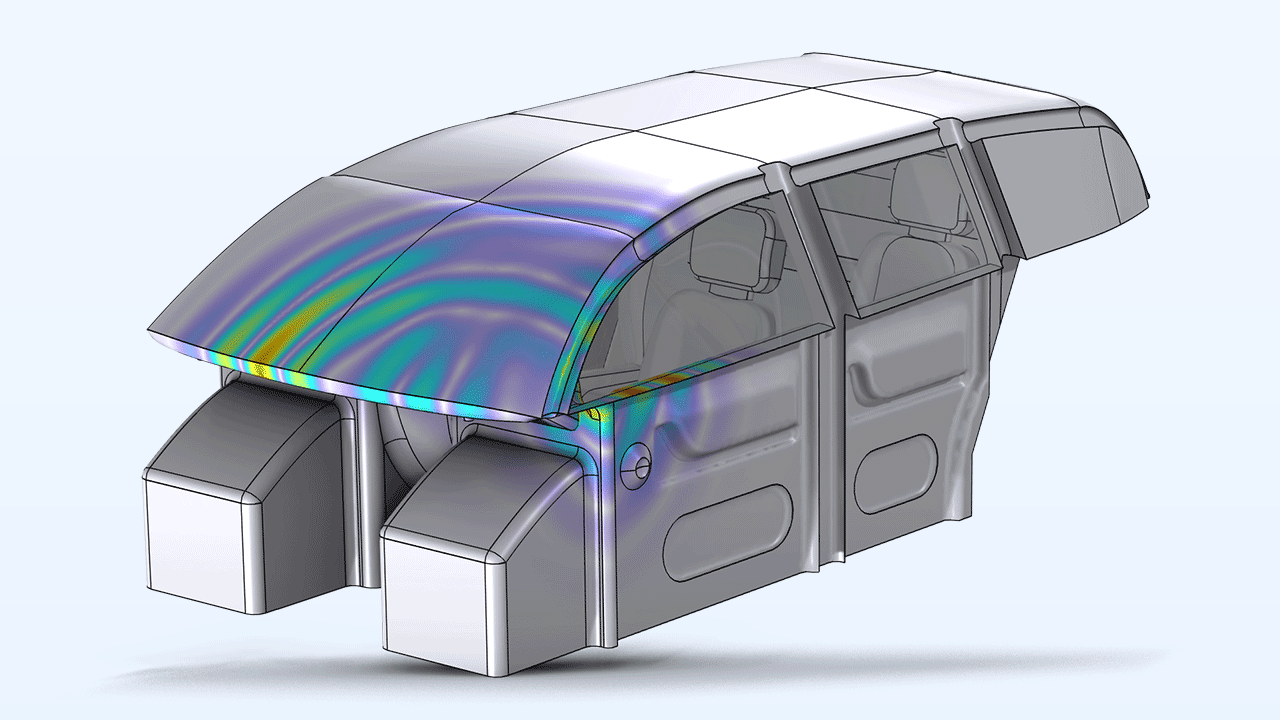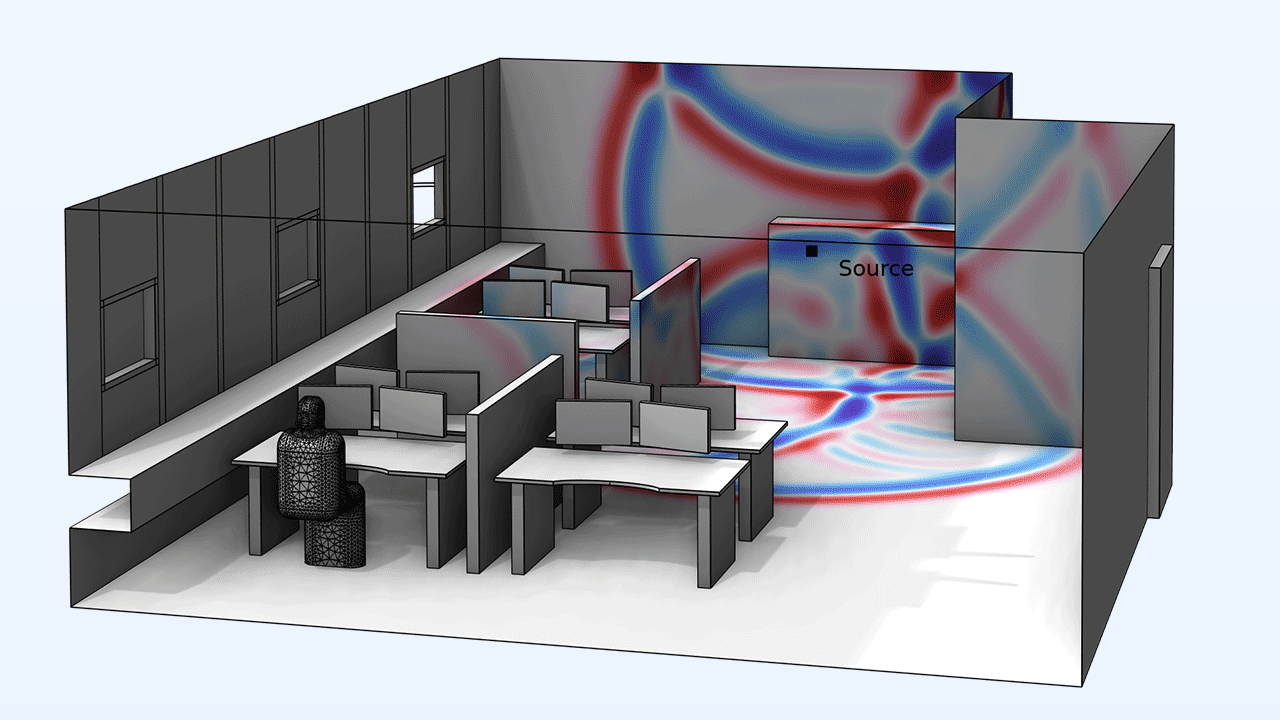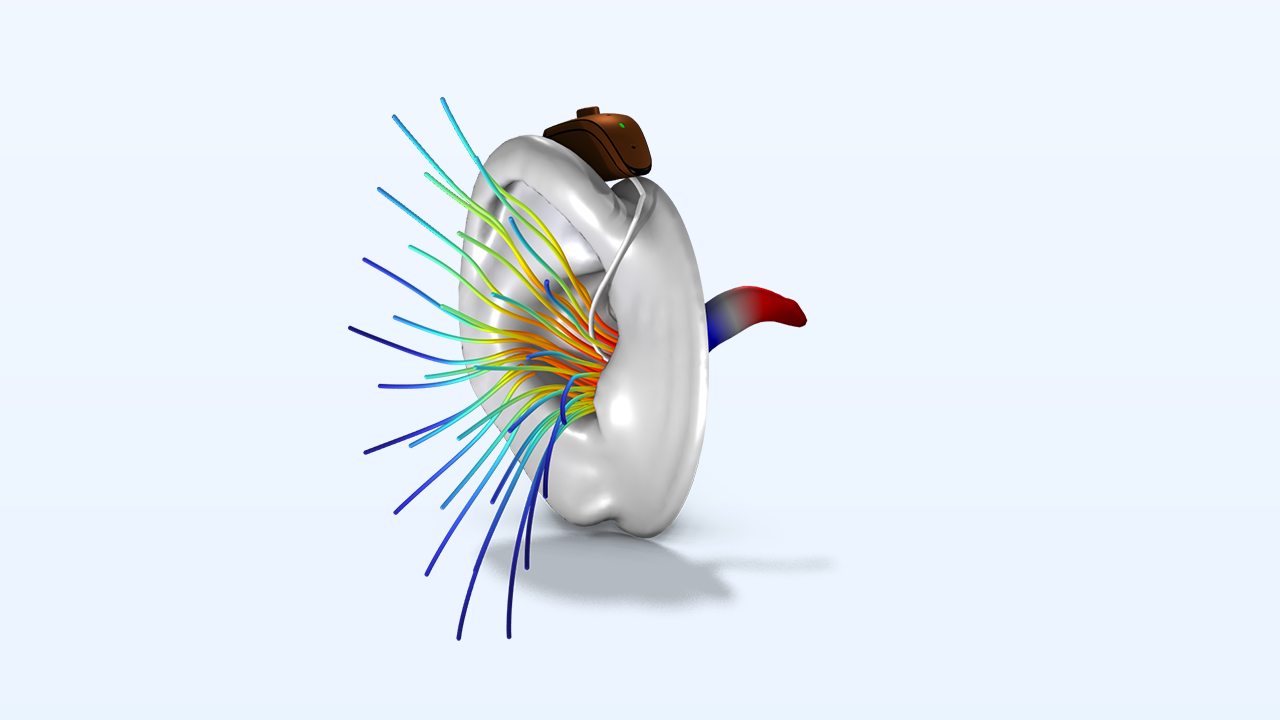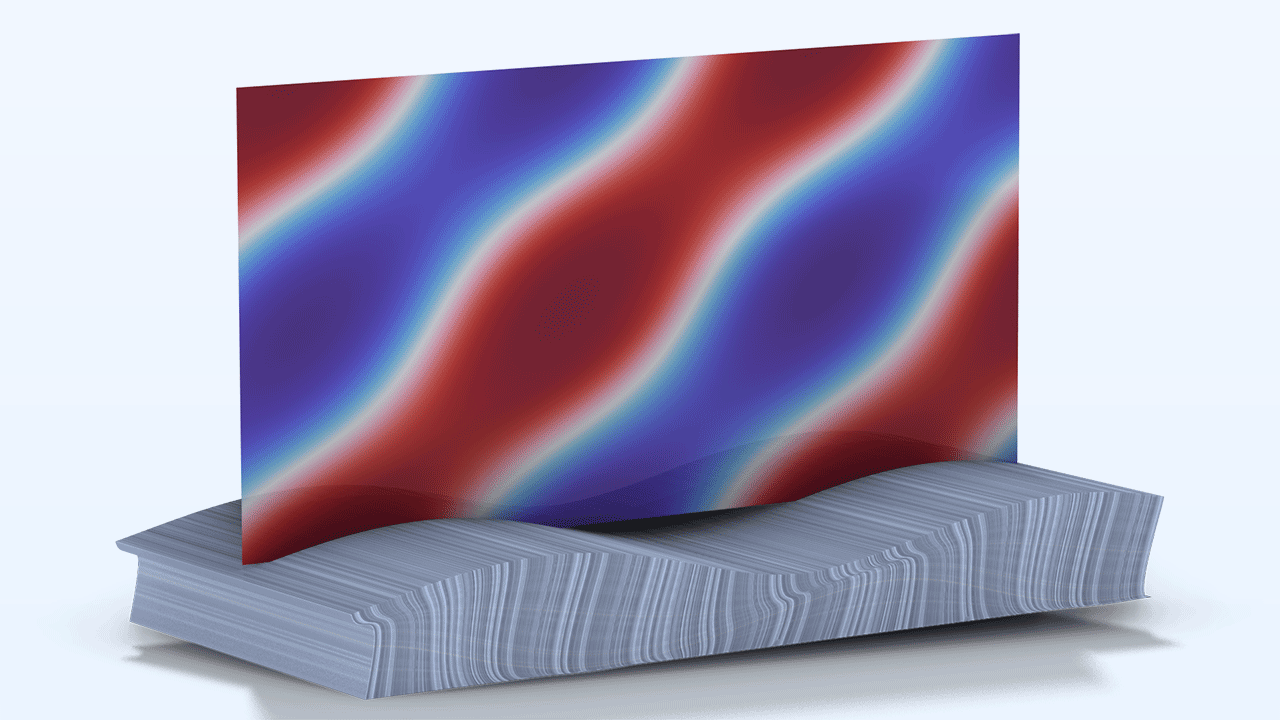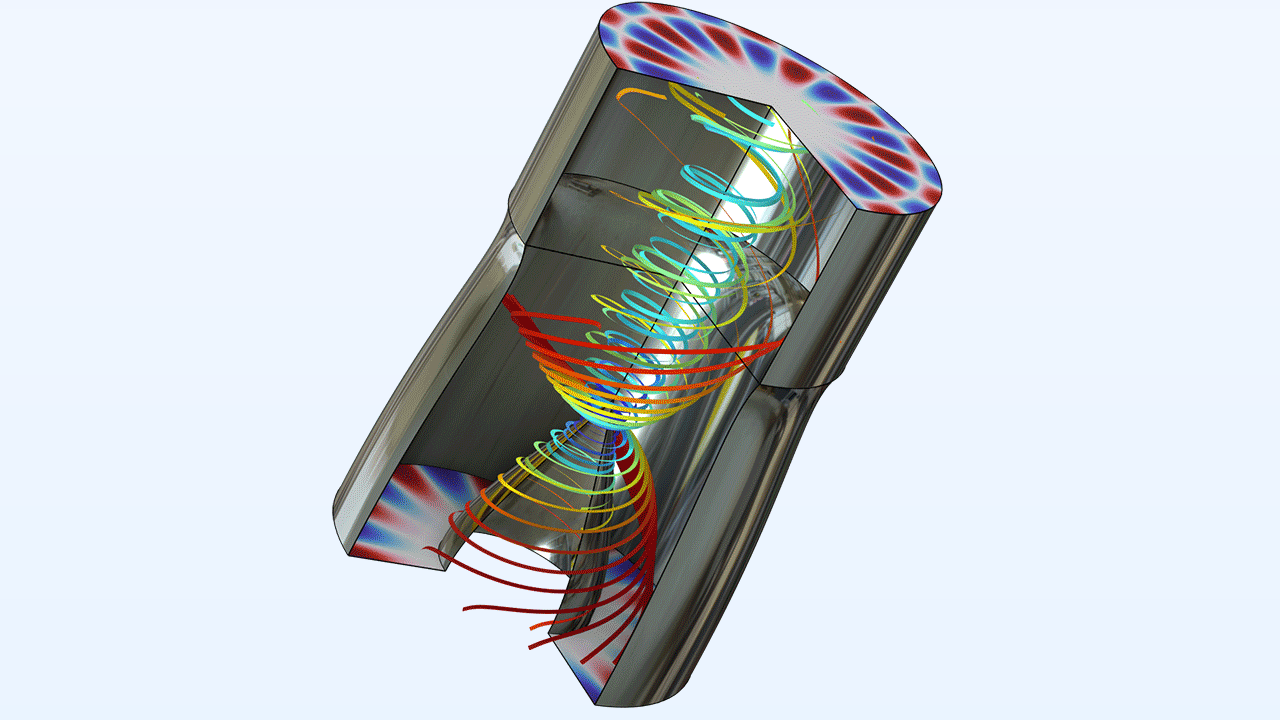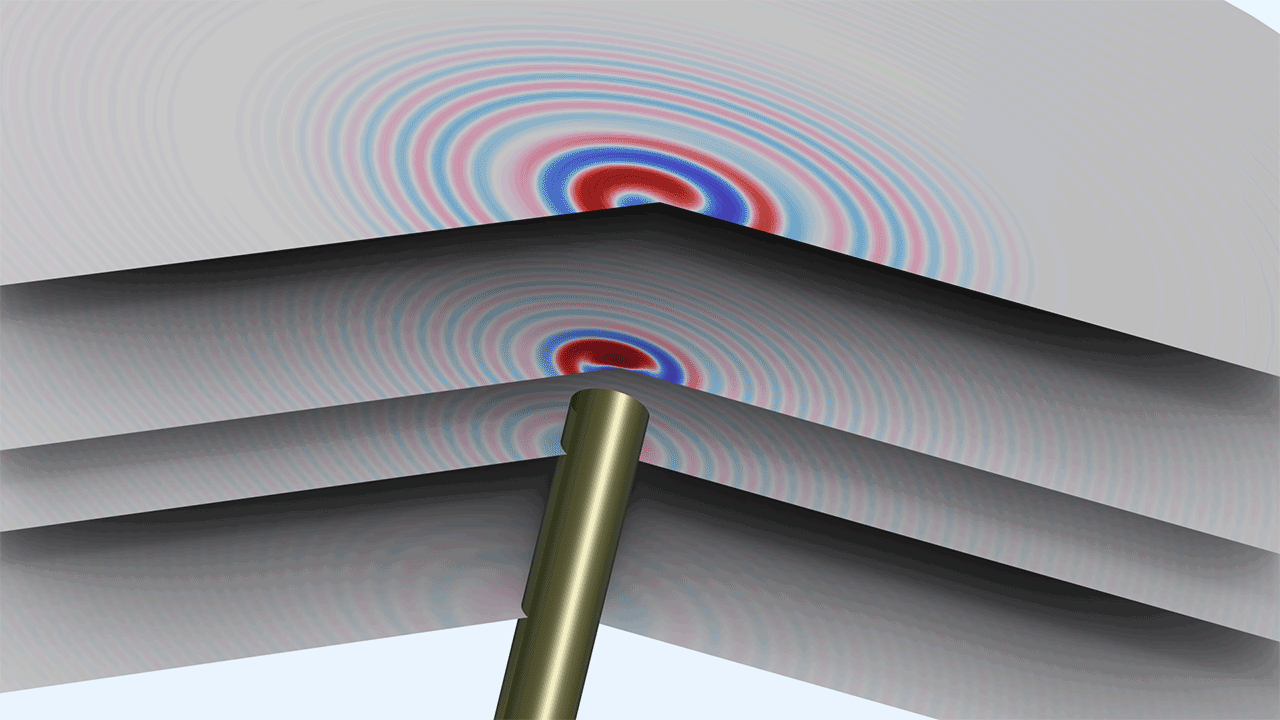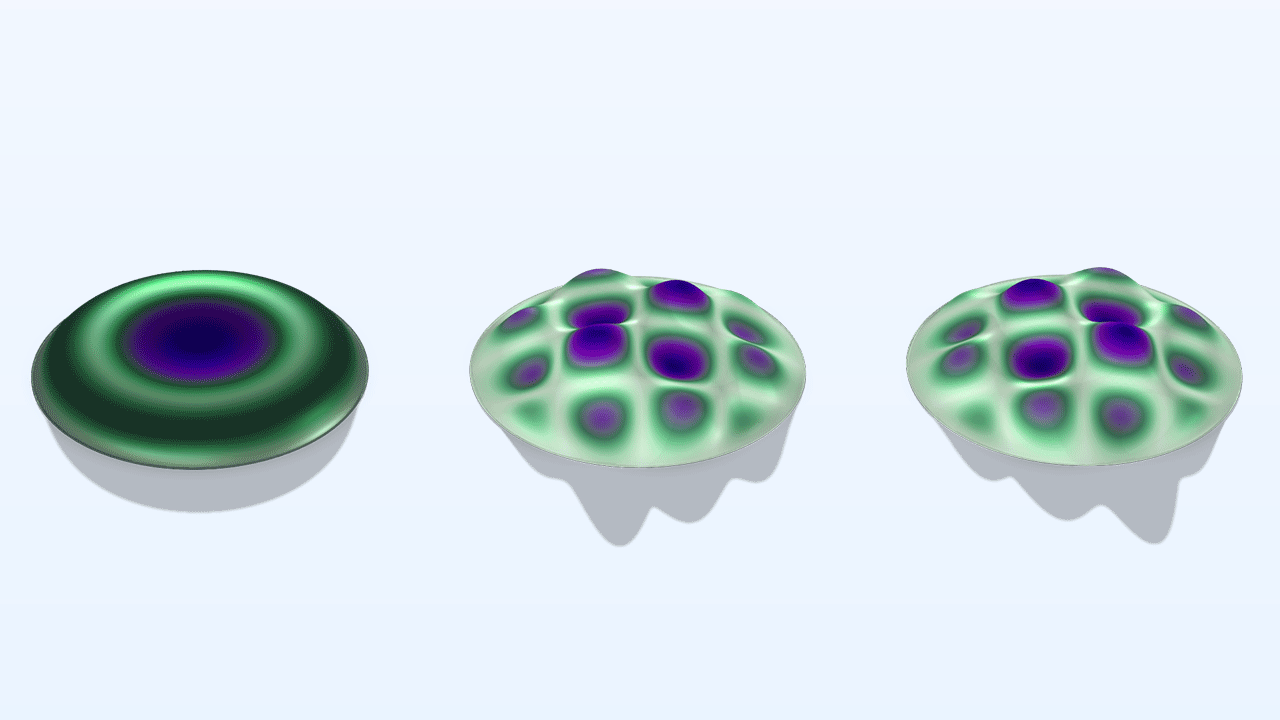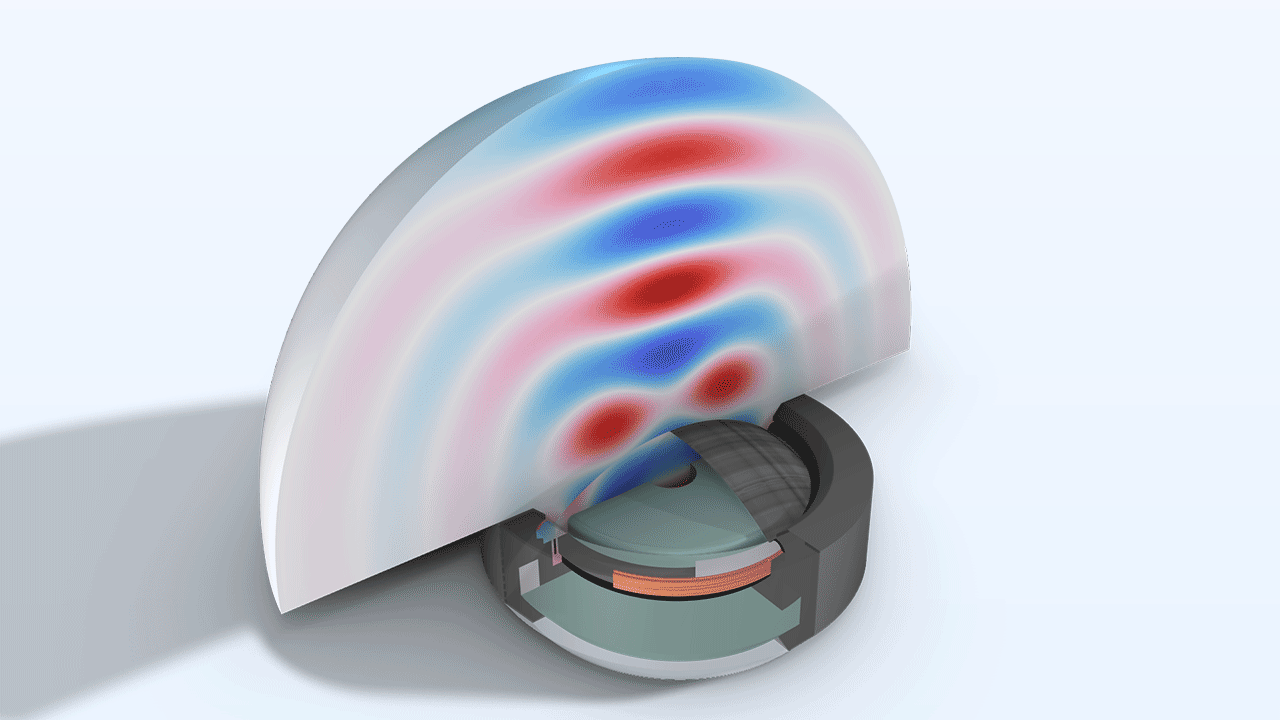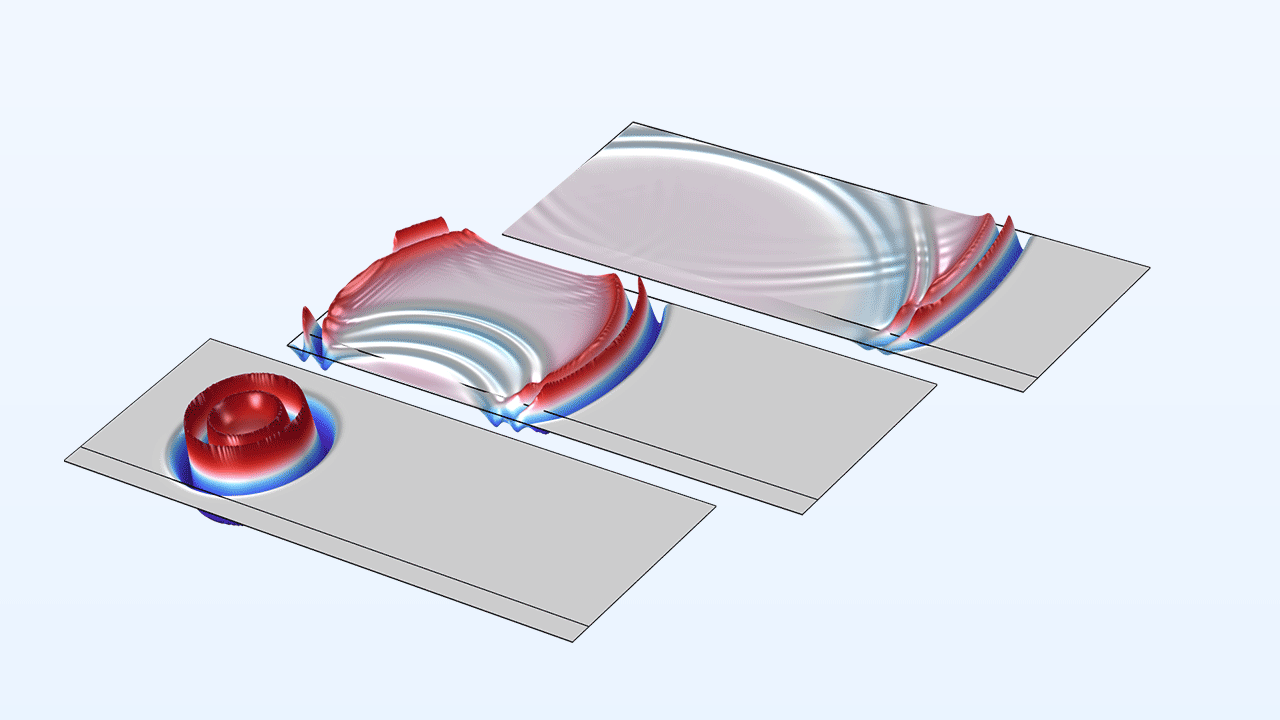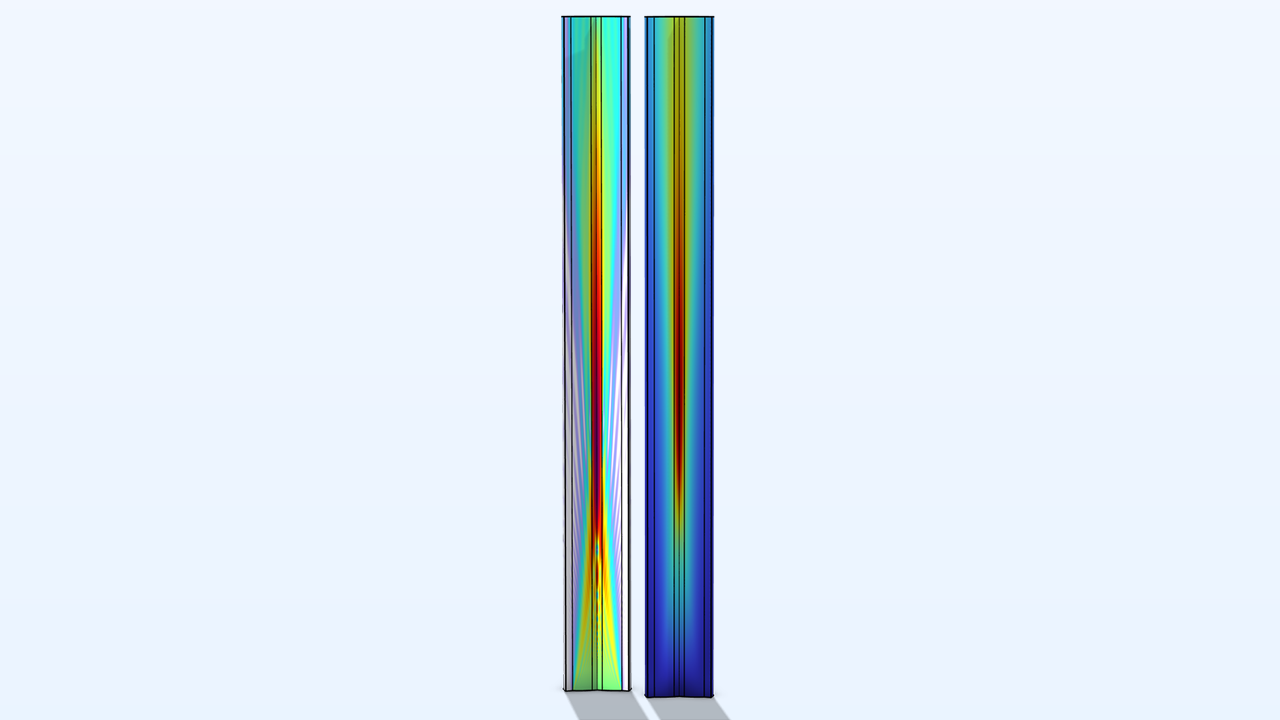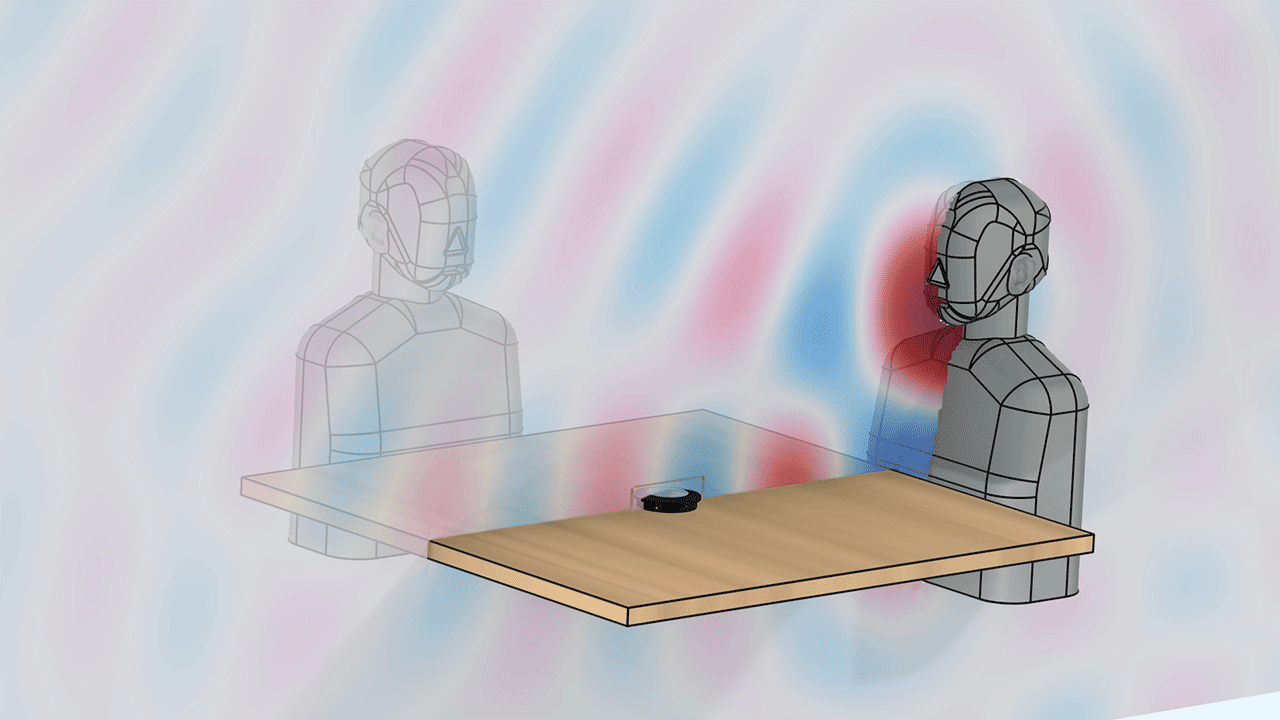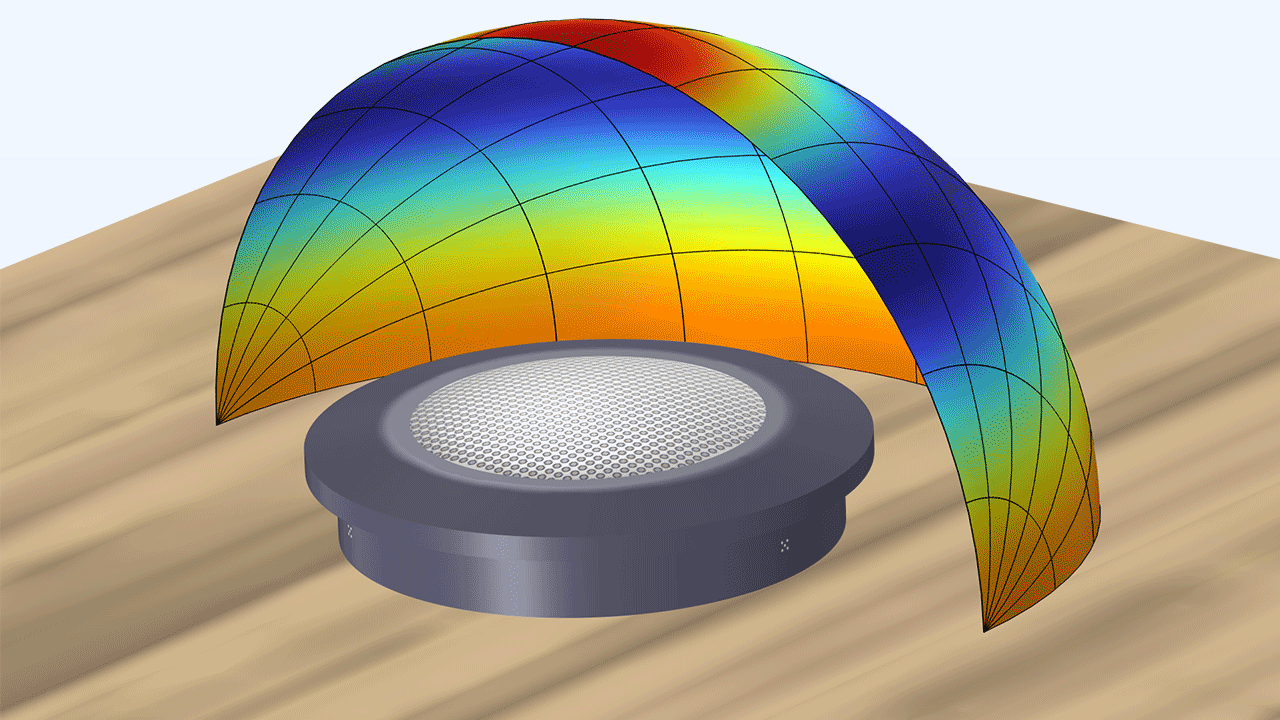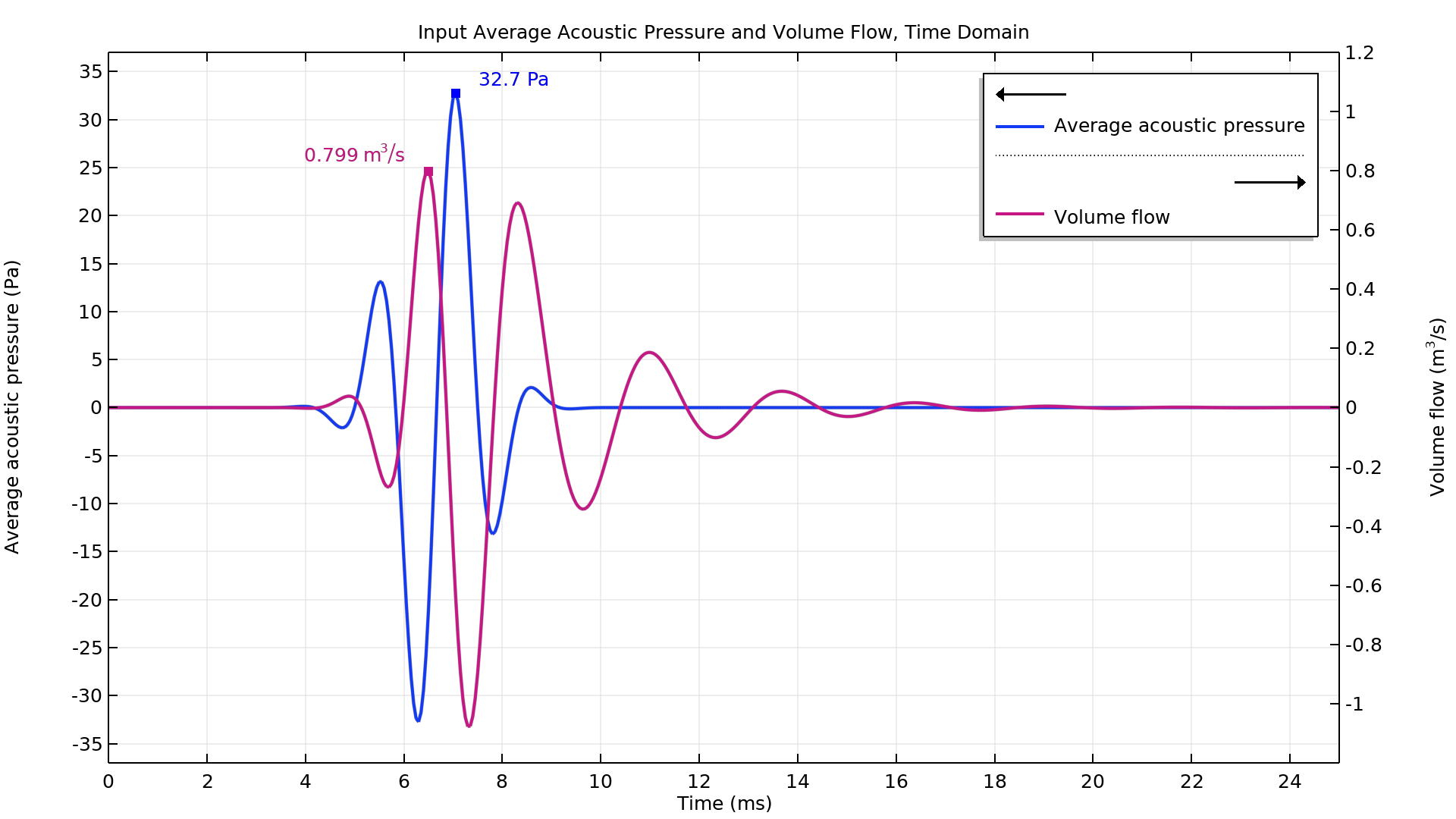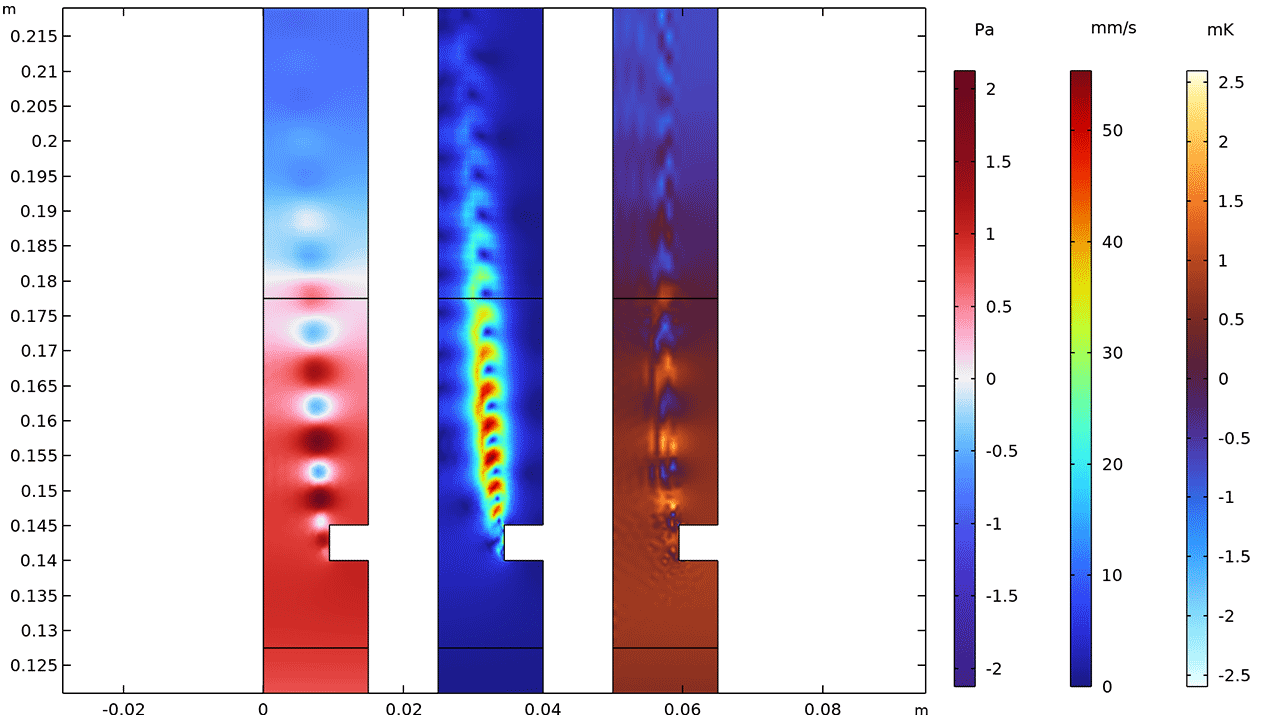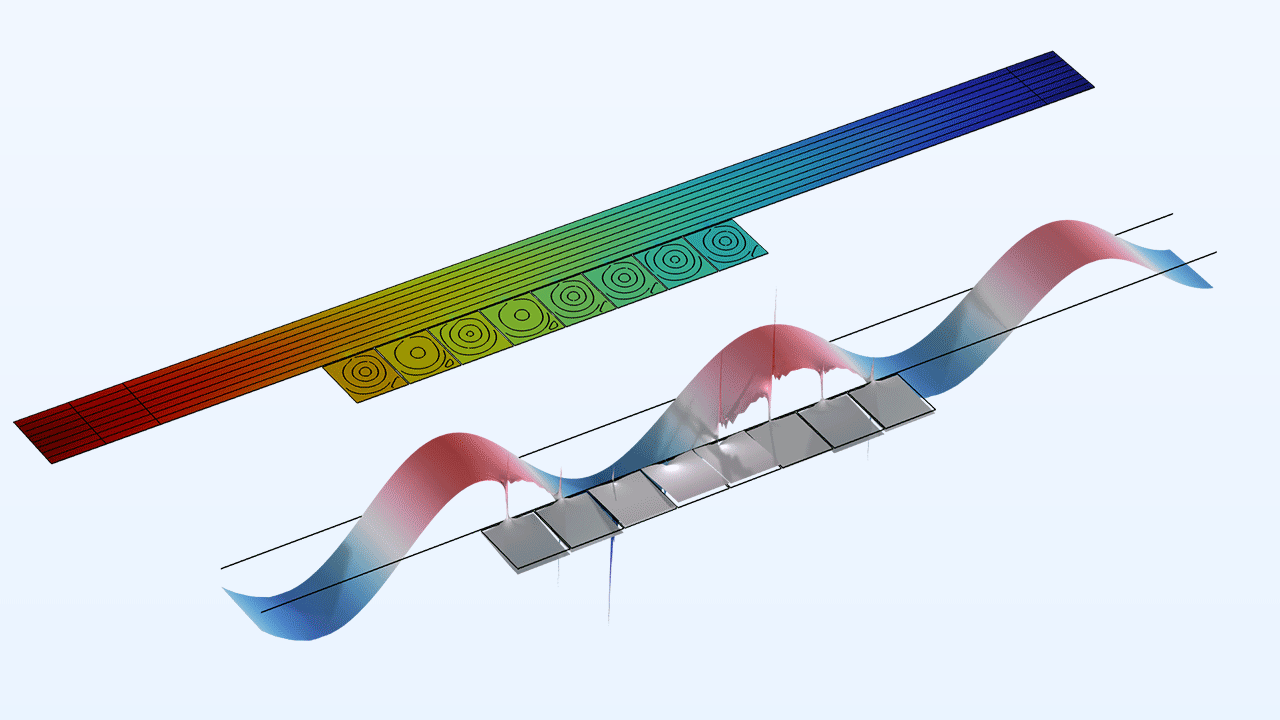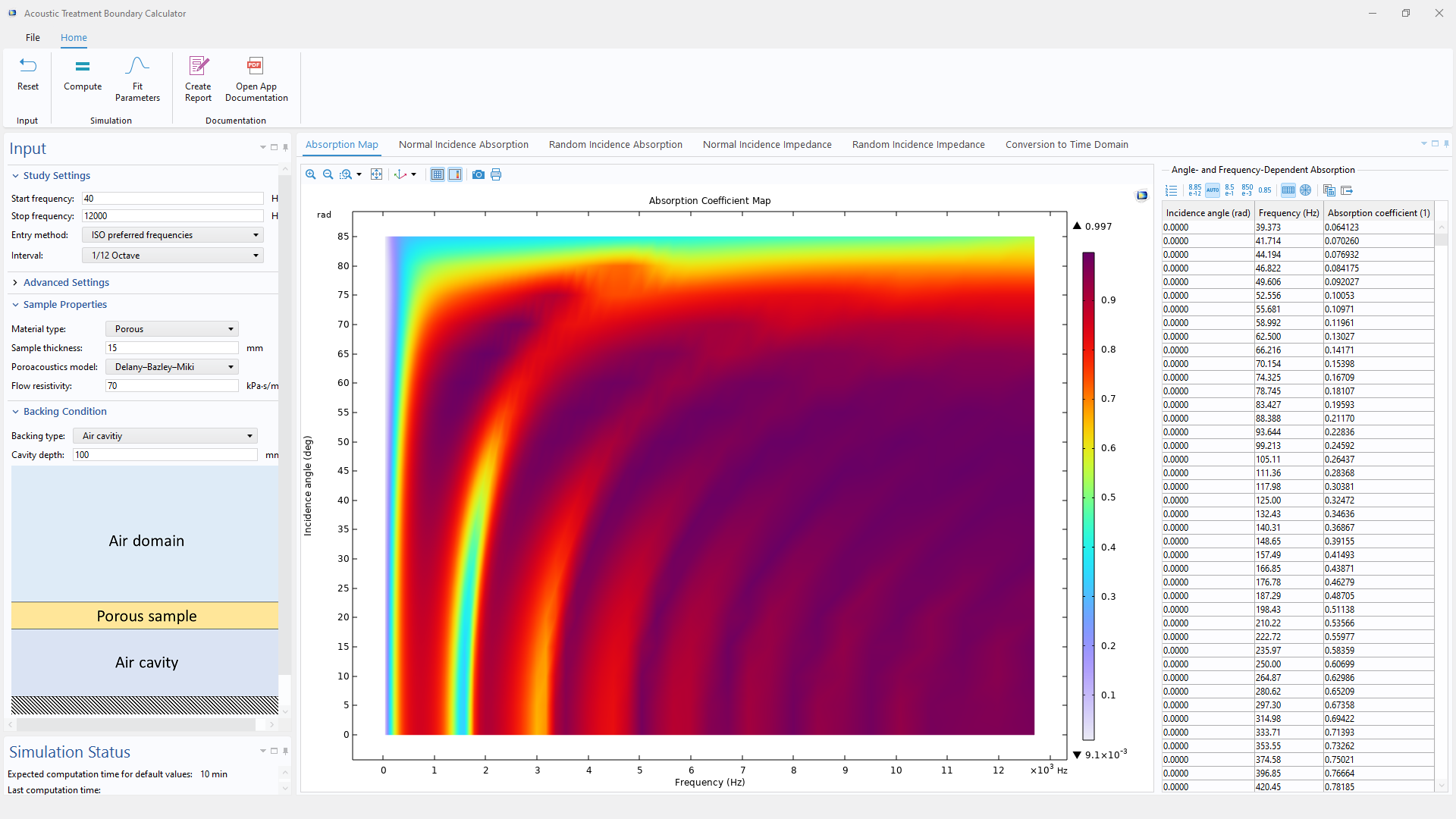Aggiornamenti Acoustics Module
Supporto GPU per simulazioni accelerate di acustica di pressione esplicita nel tempo
All'interfaccia Pressure Acoustics, Time Explicit è stato aggiunto un solutore accelerato. Quando si selezionano le opzioni del solutore per il supporto della GPU, l'accelerazione può essere notevolmente aumentata. Per questa accelerazione è necessaria una scheda NVIDIA® e quando il problema rientra nella memoria della GPU, si possono ottenere accelerazioni fino a 25 volte maggiori rispetto all'uso di CPU multicore. Le caratteristiche principali, come la condizione generale Impedance per applicare i dati di impedenza reali delle superfici assorbenti e la funzione Absorbing Layer per modellare domini aperti, sono compatibili con il solutore accelerato dalle GPU. I seguenti tutorial dimostrano questa nuova funzionalità:
Poroacustica nel dominio del tempo e acustica anisotropa della pressione
All'interfaccia Pressure Acoustics, Time Explicit è stata aggiunta una nuova funzione Poroacoustics che consente la modellazione nel dominio del tempo di materiali porosi utilizzando un modello di fluido equivalente. Questa funzione utilizza la funzione migliorata Partial Fraction Fit per convertire i dati dipendenti dalla frequenza per la densità e la conformità equivalenti nel dominio del tempo tramite un'approssimazione di funzione razionale. Qualsiasi modello poroacustico correttamente adattato può ora essere utilizzato nel dominio del tempo.
Inoltre, nell'interfaccia Pressure Acoustics, Frequency Domain è disponibile un nuovo modello Anisotropic Poroacoustics che supporta proprietà anisotrope per la resistività del flusso, la tortuosità e la lunghezza caratteristica viscosa nei materiali poroacustici.
Esempi di utilizzo della funzione Poroacoustics e del modello Anisotropic Poroacoustics si trovano rispettivamente nei tutorial Porous Absorber with Local and Extended Reacting Approximations for Time-Domain Modeling e Anisotropic Porous Absorber.
Formulazione più veloce dell'acustica termoviscosa
La nuova interfaccia Thermoviscous Acoustics, SLNS Approximation risolve la propagazione delle onde acustiche, utilizzando l'approssimazione sequenziale linearizzata di Navier-Stokes (SLNS) per includere le perdite dello strato limite termoviscoso in modo computazionalmente efficiente. L'interfaccia risolve le equazioni di governo nel dominio della frequenza ed è particolarmente adatta alle simulazioni di sistemi di grandi dimensioni. Il modello Generic 711 Coupler - An Occluded Ear-Canal Simulator mostra questa interfaccia.
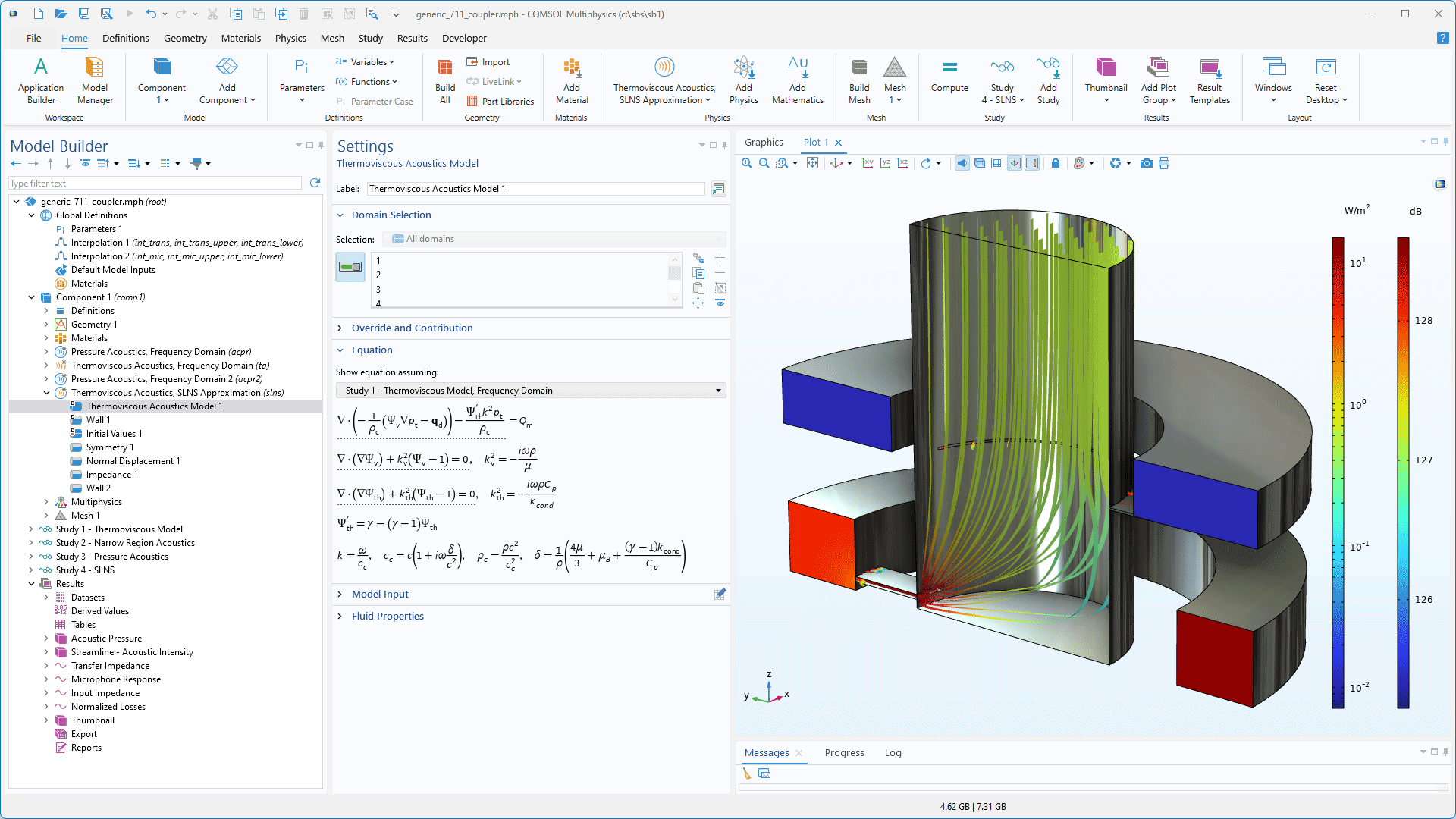
Nuova funzionalità per l'acustica di pressione nel dominio della frequenza
All'interfaccia Pressure Acoustics, Frequency Domain sono stati aggiunti i seguenti modelli di impedenza interna: Thin plate, Membrane, Porous mass layer e Perforated plate. Questi modelli, noti anche come “modelli di impedenza di trasferimento”, sono disponibili per le condizioni di Interior Impedance, Pair Impedance e Impedance nell'accoppiamento Acoustic BEM-FEM Boundary. L'uso di un nuovo modello di impedenza è visibile nel tutorial Target Strength of Submarine with Outer Hull Using FEM-BEM.
Inoltre, la condizione Port dispone ora di un'opzione incorporata Annular per le geometrie anulari. Sia la porta Circular che quella Annular possono definire l'opzione Azimuthal angle dependency come Sine o Cosine per aggiungere modi ortogonali per determinati numeri di modo azimutali. L'uso della funzionalità aggiornata della condizione Port è visibile nel tutorial Absorptive Muffler.
Accoppiamento elettromeccanico multifisico per membrane e shell
Le nuove interfacce Electromechanics, Shell ed Electromechanics, Membrane semplificano la modellazione delle deformazioni di strutture sottili, come le membrane microfoniche, influenzate da forze elettrostatiche. Queste interfacce includono automaticamente l'accoppiamento multifisico Electromechanics, Boundary per una perfetta integrazione con elementi shell o membrana e utilizzano l'interfaccia Electrostatics per modellare un campo elettrico. Queste interfacce richiedono l'AC/DC Module o il MEMS Module in aggiunta allo Structural Mechanics Module.
Questa nuova funzionalità multifisica può essere integrata nelle simulazioni di acustica che coinvolgono strutture sottili. Ad esempio, l'uso dell'accoppiamento Electromechanics, Boundary è dimostrato nei tutorial Brüel & Kjær 4134 Condenser Microphone e Axisymmetric Condenser Microphone.
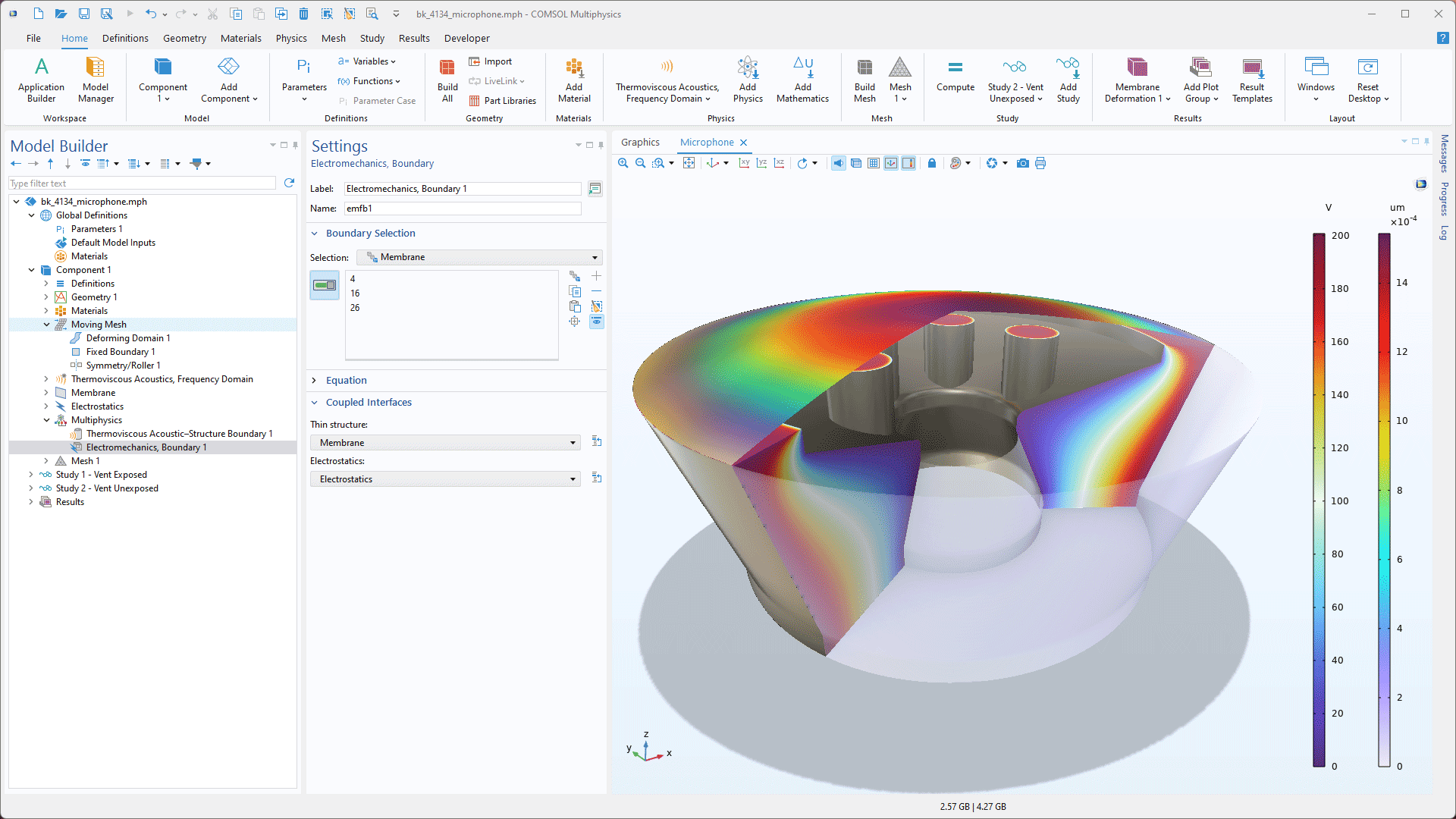
Modalità analitiche di porta per l'espansione della sorgente modale aeroacustica
Alla condizione Port dell'interfaccia Linearized Potential Flow, Frequency Domain sono state aggiunte opzioni analitiche standard per le modalità di porta, con opzioni integrate per le modalità di porta Annular e Circular. Queste opzioni semplificano la configurazione del modello, in particolare per l'espansione modale delle sorgenti aeroacustiche misurate e per il calcolo della perdita di trasmissione modale nei condotti di flusso. I seguenti tutorial illustrano questa novità:
Tutorial nuovi e aggiornati
La versione 6.3 di COMSOL Multiphysics® introduce nell'Acoustics Module diversi tutorial nuovi e aggiornati.
Car Cabin Acoustics — Transient Analysis
Acoustics of an Open-Plan Office Space
Full-Ear Hearing Aid
Anisotropic Porous Absorber
Flow Duct
Sound Radiation from a Circular Duct with Flow
Dome Tweeter with Composite Diaphragm — Eigenfrequency Analysis
Dome Tweeter with Composite Diaphragm — Frequency-Domain Response
Porous Absorber with Local and Extended Reacting Approximations for Time-Domain Modeling
Diesel Particulate Filter Analysis Using an Acoustic Transfer Matrix
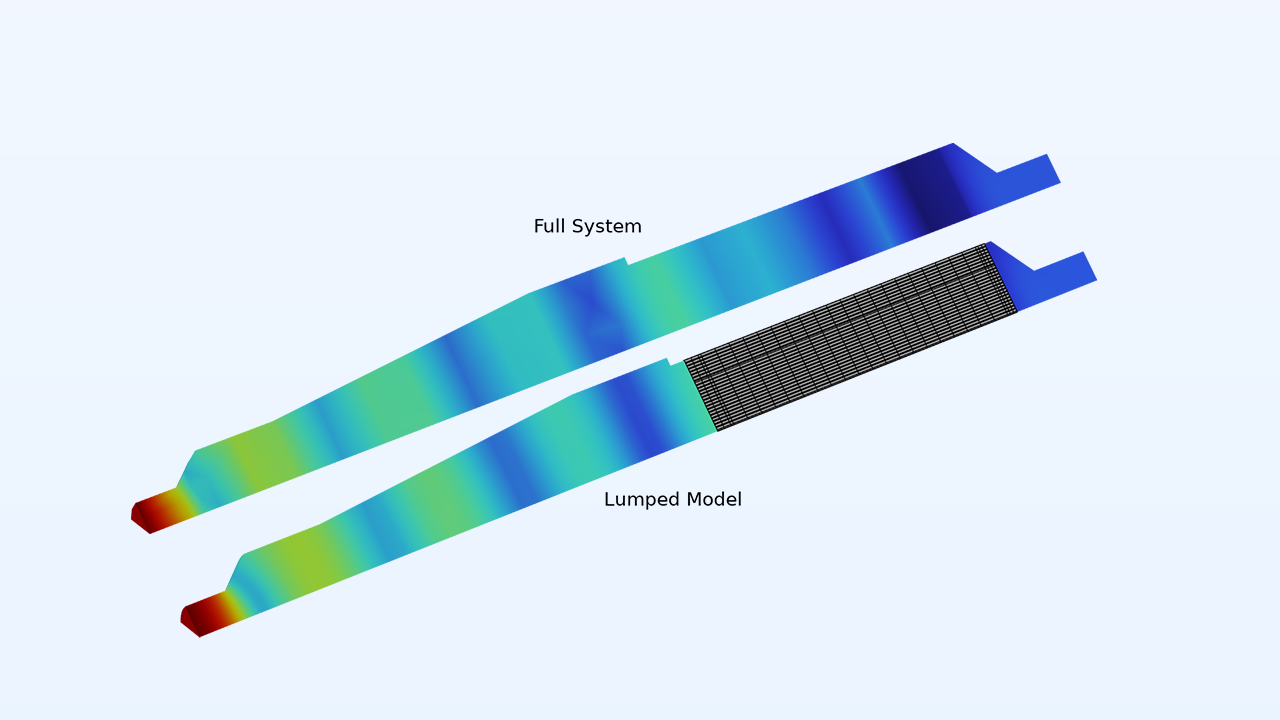
diesel_particulate_filter_transfer_matrix
Download da Application Gallery
Acoustic Streaming Induced by a Focused Ultrasound Beam
Conference Speaker Virtual Test Setup
Conference Speaker System
Input Impedance of a Tube and Coupler Measurement Setup: Time-Domain MOR Using Partial Fraction Fit
Whistling Potential of an In-Duct Orifice in the Presence of Flow
Acoustic Liner with a Grazing Background Flow
Midwoofer Harmonic Distortion Analysis with KLIPPEL Measurements
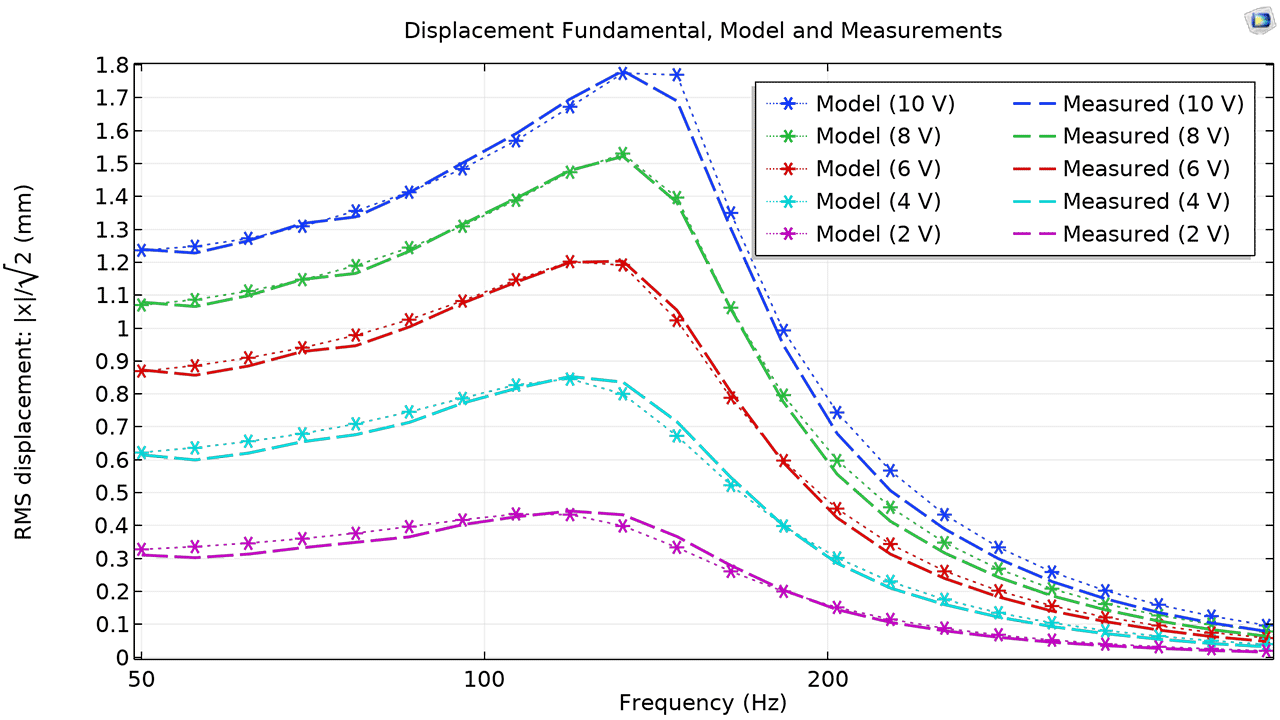
KLIPPEL è un marchio registrato di Wolfgang Klippel.

